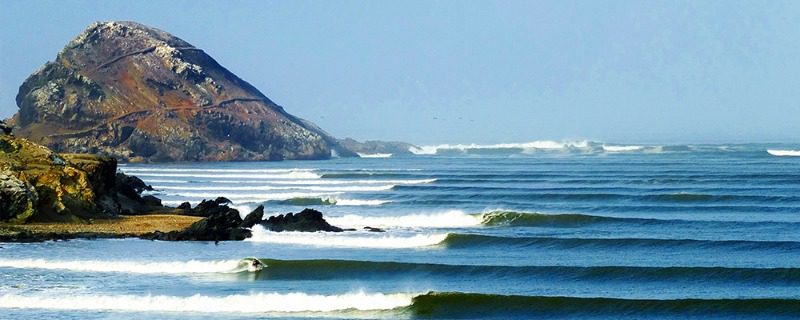Do you know which are the longest waves in the world?
Today we’ll talk about 10 waves located on different continents that can boast of being the longest waves in the world. This list is not intended to be a ranking. But as you know, at SINGLE QUIVER, we love making lists. On our website, you’ll find the best waves in Spain, the most dangerous waves in the world, and the best XXL waves on the planet in our Atlas of mythical waves. Let’s get started!
1. Skeleton Bay, Namibia
Somewhere on the Namibian Coast, surrounded by desert, is the famous wave of Skeleton Bay. Discovered by the world in 2008, after a Surfing Magazine contest using Google Earth to search for waves. It still seems incredible that this wave didn’t appear on any surf map 10 years ago. It was Cory López who made it known to the world by riding it for 50 seconds. After its discovery, it became crowded.
Breaking over a sandy bottom and forming one of the longest, fastest, and most powerful barrels on this bottom, it is considered one of the best waves in the world. Its season runs from May to September. Although it only works a few times a year. It requires strong west swells with high periods.
Getting to the spot is quite a feat. But it’s definitely worth it. Just ask Aritz Aranburu, Joan Duru, and Marc Lacomare.
2. Jeffreys Bay, South Africa
Continuing in the African continent, specifically in the eastern cape of South Africa. One hour from Port Elizabeth and between the bays of Garden Route and the Sunshine Coast, you’ll find this jewel of right-handers. Also known as J-Bay, Jeffreys Bay was surfed for the first time in 1964 by local surfers.
Last year, images of the Australian Mick Fanning went around the world when the surfer was attacked by a great white shark during the final of the J-Bay Open of the WSL.
The wave is divided into very distinctive sections: Boneyards, Tubes, Albatross, Point, and Supertubes. The latter is recognized as the best part of the wave. Under the right conditions, these sections will connect to form a wave that can reach 1.5 km in length. From Boneyards to the end of Albatross. It works from April to October.
3. Raglan, New Zealand
To the west of Hamilton is this small surf town, which we could consider as the mecca of surfing in New Zealand. And it’s here that you’ll find one of the longest lefts on the planet.
The Raglan wave was introduced to the world in the movie “The Endless Summer” in 1966. By the way, The Endless Summer is one of the essential surf movies in any surfer’s film collection.
This incredible left can be surfed for 2 km. This distance is the result of the union of Indicators, Whale Bay, and Manu Bay. The latter, also known as The Point, with a cobblestone bottom and with a hollow drop followed by a tube to continue along a long wall, is the most popular.
This endless left works with big S0 swells, but rare is the day when Raglan is not pumping. It works especially well from January to May.
4. Superbank, Australia
In the heart of the Gold Coast, you’ll find this world-class spot with a 2km long sandbank. It is the result of the joining of the following spots: Snapper Rocks, Rainbow Bay, Greenmount, Coolangatta Beach, and Kirra. Since 2002, Snapper Rocks has been the venue for one of the WSL’s major events, and it is precisely here that the season begins with the Quicksilver Pro Gold Coast.
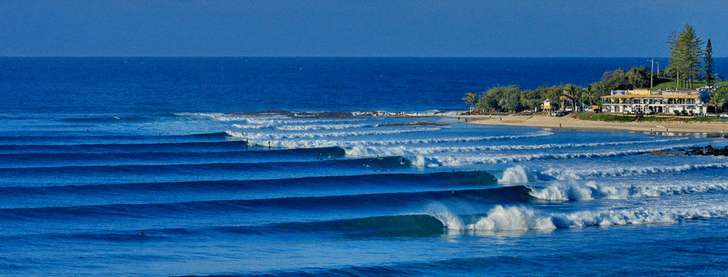
It provides more than two minutes of fun, and it’s possible to get tubed up to four times on the same wave. Hollow, powerful, fast, and fun. Surfers like Mick Fanning are locals at this beach.
5. El Bono 7 Ghost, Sumatra
Located on the Kampar
River in Sumatra, El Bono 7 Ghost is a wave caused by the tide change. Its surfing potential was discovered in 2010 by French surfers. It only works on days around the full moon and the new moon, during the rainy season, precisely when the Kampar River carries more water. It can form waves up to 50 km in length.
Other waves caused by tidal changes are the well-known Pororoca of the Amazon in Brazil and its counterpart in India, on the Ganges River.
6. Scorpion Bay, Baja California, Mexico
San Juanico, also known as Scorpion Bay, although it has developed quite a bit in recent years, remains a fishing village in the middle of Baja California’s desert. All of this changes when there are good waves. With the arrival of a south or southwest swell, its population can easily double or even triple.
Known for having some of the best waves in all of Mexico, it offers a chain of quality right-handers with a sandy and lava bottom. It consists of 4 points, which with big swells can connect, creating a powerful and hollow wave that you can surf for 3 minutes. Its season extends from April to October.
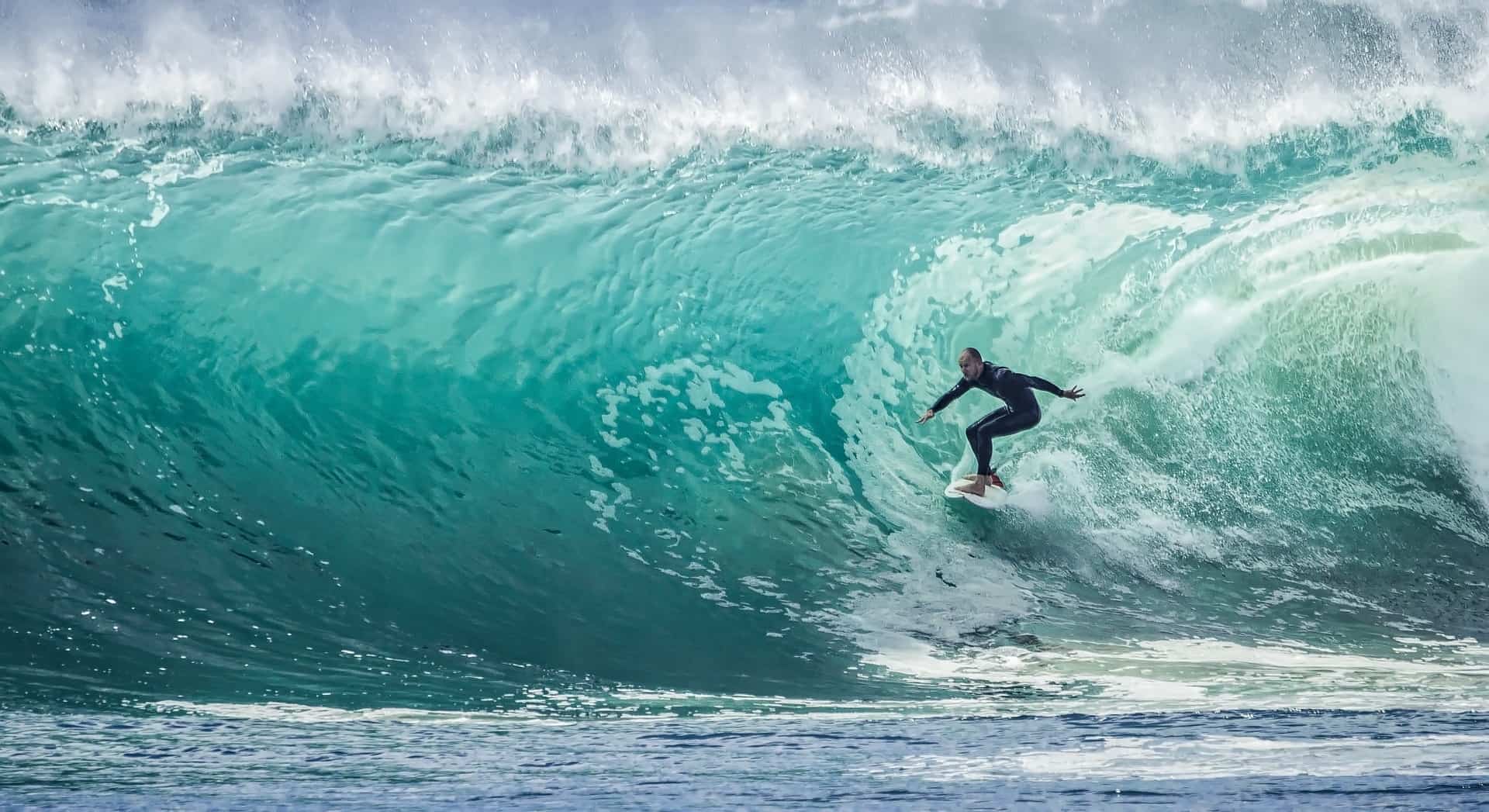
7. Punta Roca, La Libertad, El Salvador
Just a 5-minute walk from the city of La Libertad on the Bálsamo Coast. Known as El Punta, it’s an endless right-hand point break, making it every surfer’s dream. It is divided into several sections: the lip section, reduction section, tube section, and super-speed section. From late February until approximately the end of November, El Punta picks up all the hemispheric swells.
It works with swells from the S-SO and W directions. During the wave season, the place is very consistent. The biggest waves, which can reach heights of 10 to 15 feet, are usually in April and May.
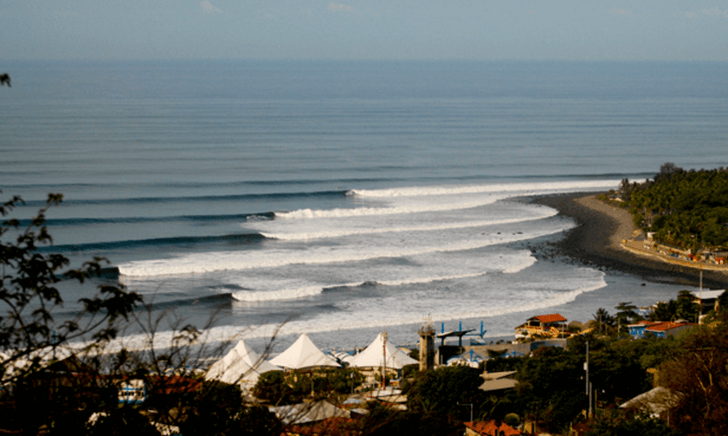
8. Pavones, Costa Rica
Five hours south of San José, at the end of the Osa Peninsula, is this paradise for the skilled surfer. It is one of the most magical and longest breaks in the world. We recently posted a surf documentary video that showed a new perspective of Pavones. In case you didn’t get a chance to see it, we’ll leave it here again.
Surfers heading to Pavones will need to pray for southwest winds for ideal surfing conditions. It is an extremely long left that breaks over a rocky bottom at all tides and with S/SW swell. When the 4 sections connect, a ride of around 1 km is formed, allowing you to surf this wave for almost 3 minutes. This makes it easy for surfers to practice their favorite tricks.
The best time to visit Pavones is from April to November. If you’re thinking of escaping to Costa Rica this summer, be sure to check out our “Surf Seasons” section. Make sure the chosen date coincides with the best wave season in the country. Pay special attention to the tides, as at low tide, the rocks at the entrance can give you a scare. So, booties wouldn’t hurt.
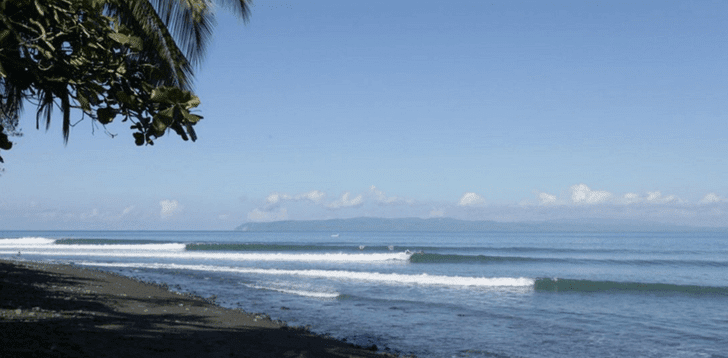
9. Chicama, Puerto Malabrigo, Peru
It’s the longest left in the world. One of the few places where legs are more important than arms. Just ask the Peruvian Cristóbal de Col, who entered the Guinness Book by performing up to 34 maneuvers on a single wave. It offers a ride of up to 2.2 km, and you can surf it for up to 2:30 minutes.
The wave is perfect but needs a big swell to enjoy its full potential. It breaks over a mixed bottom of sand with rocky parts. Its season runs from March to October, although there are waves throughout the year. There is the option to hire a mototaxi and save yourself the paddle back and give your legs a rest.
10. Pororoca, Amazon River, Brazil
This tidal wave is located in the Amazon. If you’re on vacation in Belém, pay attention to the forecasts because the Pororoca occurs only twice a year. When the ocean waters, as a result of the rising tide, penetrate the river’s fluvial network. If it coincides with your visit, you’ll have the opportunity to fulfill any surfer’s dream. An endless wave.
“Pororoca” is a term from the Tupi-Guarani language that means “great noise.” And that’s because this wave can be heard coming 30 minutes before. This is why it got its name. The first record was obtained by the Brazilian Picuruta Salazar, who was 43 at the time. He held the record for nine years until Sergio Laus, also from Brazil, covered ten kilometers in just over 33 minutes on the Pororoca.
This brownish wave carries mud, rocks, and logs in its path, posing a new danger to surfers, in addition to its powerful sweeping force. The presence of piranhas, alligators, and other predators of the Amazon also poses risks for the intrepid athletes who dare to ride the Pororoca.
So, although it may be hard to believe, the longest wave in the world is not in the sea but at the mouth of the world’s largest river.
If you liked this article, you can share it, give it a like, or subscribe to our Newsletter.
Follow us on Youtube
Follow us on Facebook
Follow us on Instagram
Visit our online store
